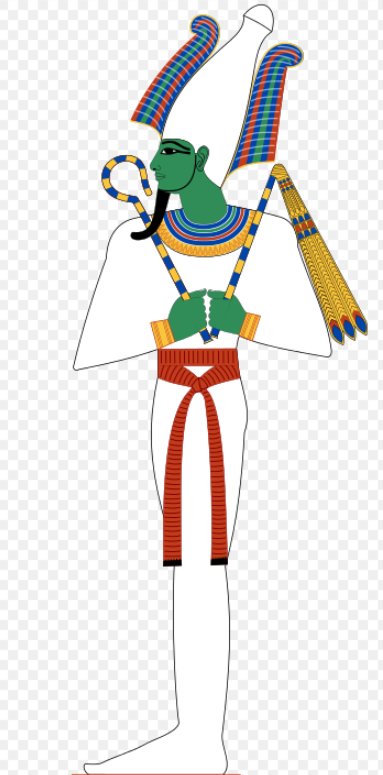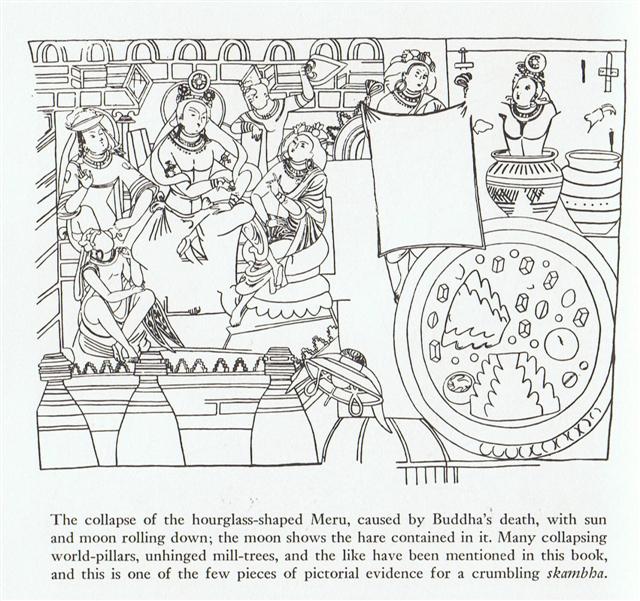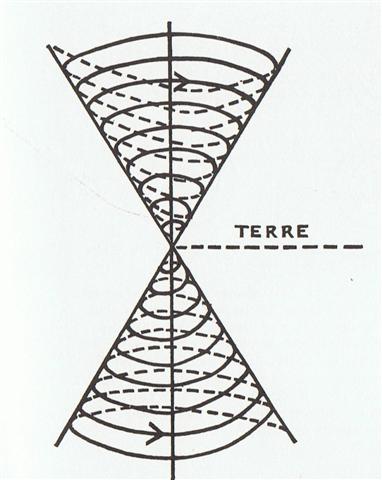The Child of Waters (θ Virginis) was close to the Full Moon at 1h, in night number 460 counted from the preceding January 1. The number of glyphs on the Tahua tablet is 46 * 29 = 1334 = 29 * (20 + 26). Day 200 is July 19 and day 200 + 60 is September 17 (and 71 * 8 = 568).
Possibly this explains the vai glyph Gb3-25, which in the model X * Y = Z should become the 'mother' (Y) with Z as the 'child'. 87 = 3 * 29 (at Gb3-26) could possíbly allude to Gb3-29, a 'child' (Z) originating from signs with lunar characteristics. Perhaps there were 4 nights of change from the midnight culmination of Regulus (the Little Sun king) in the heliacal perspective to the midnight culmination of Sadalmelik (the Lucky Rain king) in the nakshatra perspective. The pair of 'fists' at left in Gb3-26 could visualize such a shift of view. At the time of Bharani this could have been the time corresponding to Terminalia and there is a dot in front in this glyph. Possibly the tail of the Lion (93) went upwards - like a flame from a fire - while his 'Achilles heel' (Denebola, β) went downwards (following in the path of running water from β Virginis, Alaraph; separating like the path up to ε Virginis (Vindemiatrix) and down to Spica (α) via the Child of Waters (θ). Moreover, in order to get Regulus and Sadamelik coordinated they might have added 186 (twice 93) to the heliacal dates instead of my 183 days. FEBRUARY 1 (32) + 186 = 218 (AUGUST 6). 186 = 31 * 6 and Gb3-26 is glyph 316 counted from the beginning of the text on side a.
In the Babylonian system their last ecliptic station was the Girdle of Virgo (Spica). It was not their first station, as Horn was in the Chinese system. At a final it could be uncertain where it all would begin again. According to H, however, the first night of the week was ruled by the Sun and the last by Saturn:
"Osiris, alternatively Ausir, Asiri or Ausar, among other spellings, was an Egyptian god, usually identified as the god of the afterlife, the underworld, and the dead, but more appropriately as the god of transition, resurrection, and regeneration. He was classically depicted as a green-skinned man with a pharaoh's beard, partially mummy-wrapped at the legs, wearing a distinctive crown with two large ostrich feathers at either side, and holding a symbolic crook and flail. Osiris was at times considered the oldest son of the earth god Geb, though other sources state his father is the sun-god Ra and the sky goddess Nut, as well as being brother and husband of Isis, with Horus being considered his posthumously begotten son. He was also associated with the epithet Khenti-Amentiu, meaning 'Foremost of the Westerners', a reference to his kingship in the land of the dead. As ruler of the dead, Osiris was also sometimes called 'king of the living': ancient Egyptians considered the blessed dead 'the living ones'. Osiris was considered the brother of Isis, Set, Nephthys, and Horus the Elder, and father of Horus the younger. Osiris is first attested in the middle of the Fifth dynasty of Egypt, although it is likely that he was worshipped much earlier; the Khenti-Amentiu epithet dates to at least the first dynasty, also as a pharaonic title. Most information available on the myths of Osiris is derived from allusions contained in the Pyramid Texts at the end of the Fifth Dynasty, later New Kingdom source documents such as the Shabaka Stone and the Contending of Horus and Seth, and much later, in narrative style from the writings of Greek authors including Plutarch and Diodorus Siculus. Osiris was considered not only a merciful judge of the dead in the afterlife, but also the underworld agency that granted all life, including sprouting vegetation and the fertile flooding of the Nile River. He was described as the 'Lord of love', 'He Who is Permanently Benign and Youthful' and the 'Lord of Silence'. The Kings of Egypt were associated with Osiris in death - as Osiris rose from the dead they would, in union with him, inherit eternal life through a process of imitative magic. By the New Kingdom all people, not just pharaohs, were believed to be associated with Osiris at death, if they incurred the costs of the assimilation rituals. Through the hope of new life after death, Osiris began to be associated with the cycles observed in nature, in particular vegetation and the annual flooding of the Nile, through his links with the heliacal rising of Orion and Sirius at the start of the new year ..." (Wikipedia) I imagine the double sides of life, with birth (light) and death (darkness) following each other in a never ending sequence of cycles, may have motivated the crook (taking a creature by his neck for killing) respectively the flail (for speeding up her living spirits) - removing the spirit of life at the end of a cycle (takaure) respectively returning it at an apex (climax). In the Babylonian zodiac Saturn is located where the 4th quadrant is beginning and close by is a 'watery eye':
There is a double broad rim in this waterfilled eye. We can compare with the illustration from Chinese Turkestan:
The 'cloth of death' evidently separates the broad daylight phase at left - with ascending movements and a quincunx pattern based on 3 pillars - from the horizontal and unmoving (dead) stage at top right, where the torso first is inside a stone Urn and then has disappeared completely. Below this is a great round panel with a double rim. Inside is a picture of the time sky, where the unstable top part of the world mountain is collapsing. The hour-glass form of Meru is like the top and bottom parts of the Phoenician teth wheel of time:
The Babylonian zodiac can be turned a quarter around clockwise for easier comparison, resulting in a horizontal arrangement of the water - the Abyss in the west and the Field in the east. Down in the center is Eridu. But the zodiac should rather be turned a quarter around counterclockwise to show how it looked anciently, with the Abyss at the very bottom. Precession has moved not only the Abyss but also Virgo (Furrow and Frond) later in the year, away from their central position at the bottom of Meru. At the very top was the Great One, standing on a Fish like Aquarius or like the Weeping God at the Gateway of the Sun. |
||||||||||||||||||||||||||||||||||||||||||||||||||||||||||||||||||||||||||||||||||||||||||||||||||||||||||||||||||||||||||||||||||||||













